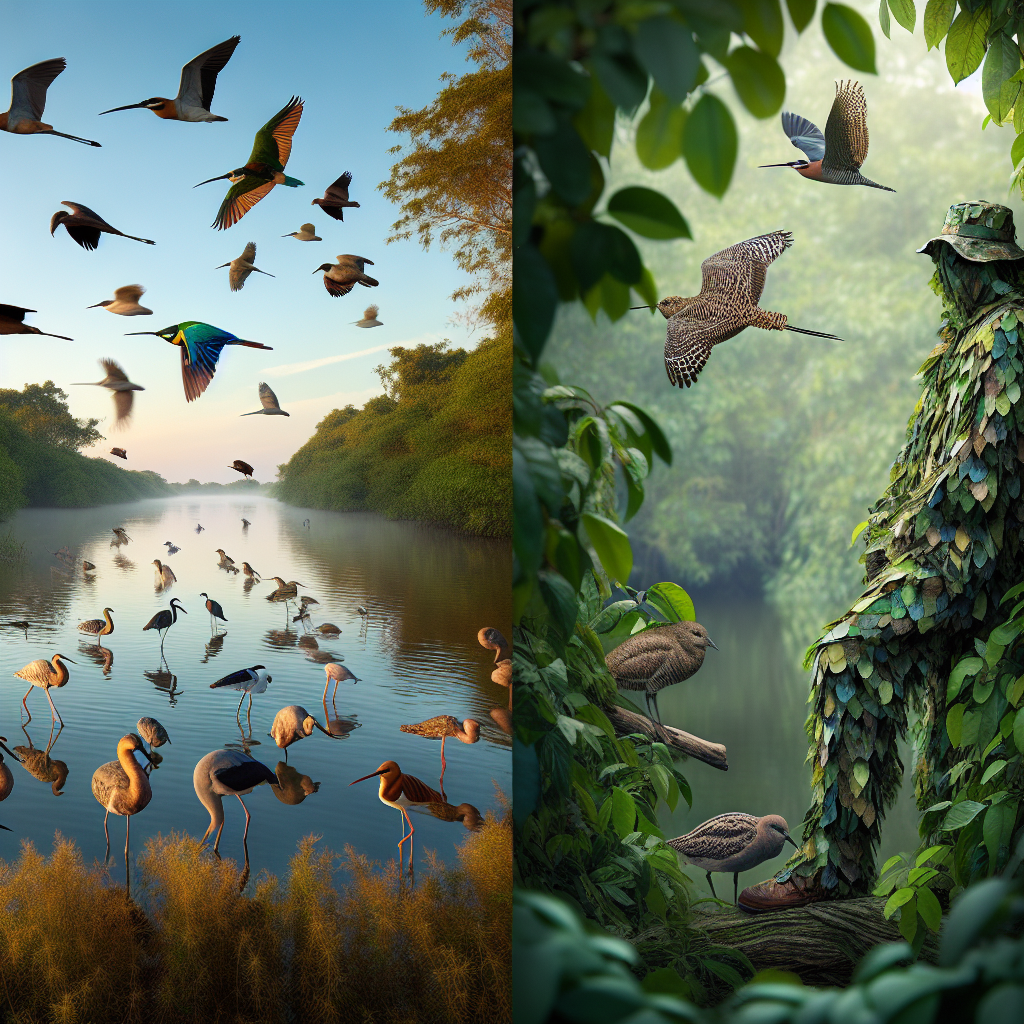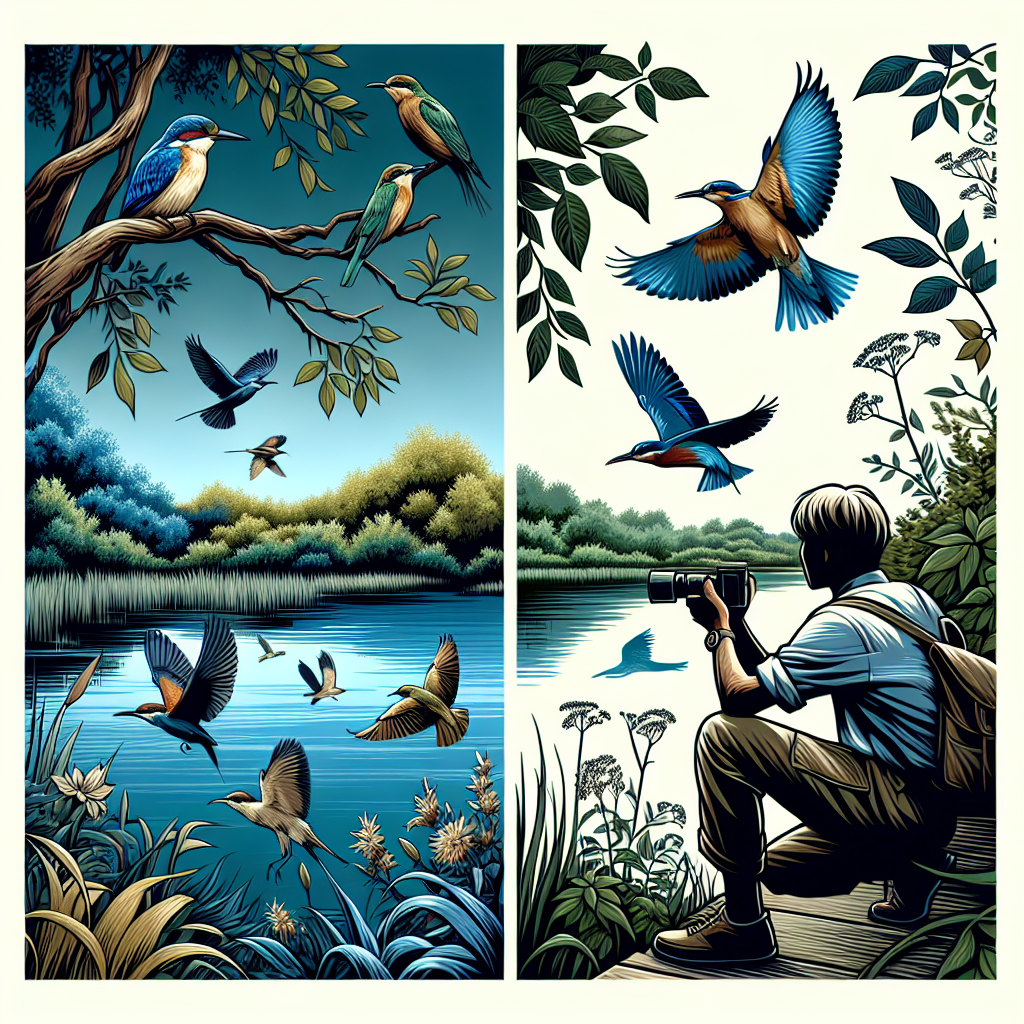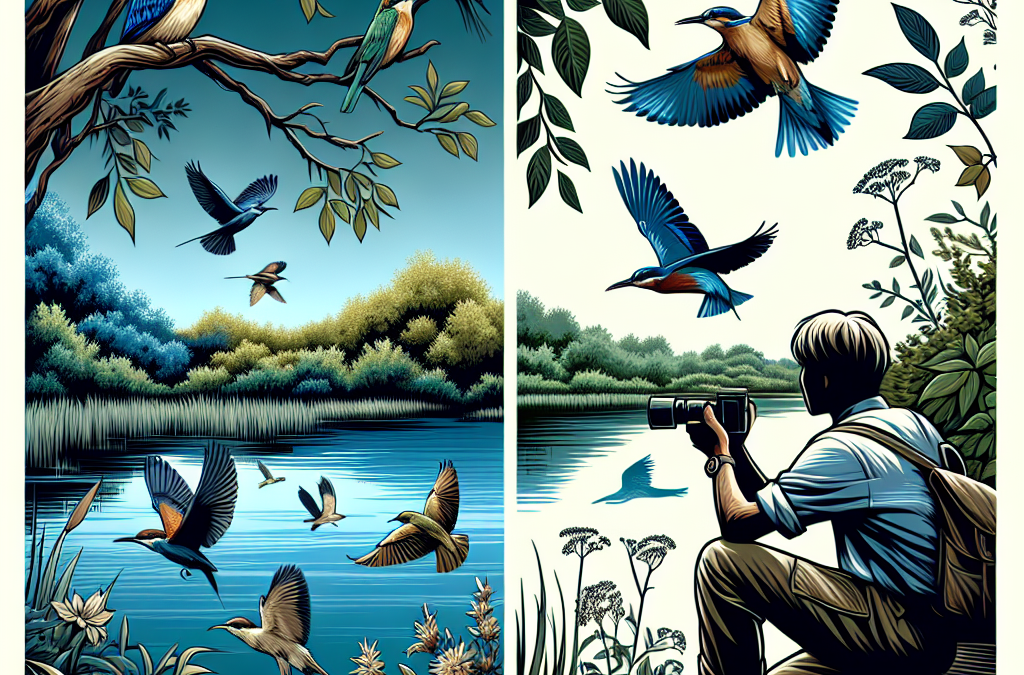If you’ve ever been fascinated by the fluttering of wings and the joyful chorus of birds in the wilderness, “The Ultimate Guide To Bird Watching In The Wild” is your essential compass. It’s a vibrant, comprehensive exploration of bird watching that takes your hand, guiding you through this thrilling activity that is as serene as it is stimulating. From identifying different species to understanding avian behaviors and habitats, it’s the perfect companion to make your journey into the vivid world of birds an enlightening experience. Get ready to immerse yourself in the enchanting symphony of nature.

Understanding Bird Watching
Bird watching is a pastime that many people across the world enjoy and cherish. It’s a hobby that not only brings one close to nature, but also provides many educational and recreational benefits.
Bird Watching Defined
Often termed as ‘Birding’, Bird Watching is the observation and study of birds in their natural habitat. It involves identifying birds by their physical attributes and sounds, recording bird sightings, and understanding their behaviors and lifestyles. It’s an enjoyable and enriching hobby that you can pursue at your own pace and in your own time.
The History and Evolution of Bird Watching
Bird Watching dates back hundreds of years, but it was in the 18th and 19th centuries that bird watching became popular as a recreational activity. With the increasing interest in natural history and the advent of printed field guides, bird watching grew into a global hobby. Today, bird watching has evolved dramatically, with many bird watchers utilizing technology to identify, record and share their findings.
The Impact of Bird Watching on Conservation Efforts
Bird Watching has had a significant positive impact on conservation efforts worldwide. Birders contribute to citizen science projects, helping scientists to track bird population trends, migration patterns and the impacts of climate change. Through bird watching, we can raise awareness of the need for bird and habitat conservation and foster a community committed to protecting the earth’s biodiversity.
Preparing for Bird Watching
Before you grasp your binoculars and head to the great outdoors, there are a few basics to prep for.
The Basics: What You Need To Know Before You Start
First, know your area – different locations will have different species of birds based on varying habitats. Get a field guide that includes birds in your region and familiarize yourself with common species. Also, understanding bird behavior, such as their feeding and nesting habits, will help you locate and identify them more easily.
Essential Gear for Bird Watching
The right gear can make your bird watching experience much more enjoyable. A good pair of binoculars is your most essential tool. Additionally, a field guide or bird identification book, comfortable outdoor clothing, a notebook or logbook for note-taking, and a camera (if bird photography interests you) are some of the other gears you might need.
Choosing Your Bird Watching Location
Not all areas are the same when it comes to bird diversity. Choosing the right bird watching location depends on what species you’re interested in seeing and the time of year. Natural reserves, parks, forests, wetlands, and even your own backyards can be great places to start.
Identifying Birds by Sight
Identifying a bird by sight can be challenging yet rewarding. The key attributes to focus on include size and shape, color pattern, behavior, and habitat.
Recognizing Different Bird Species
Every bird species has unique characteristics that set them apart – from their colors and markings to their size and shapes. By carefully observing these, you can begin to recognize different species.
Understanding Bird Behaviors
Once you can identify a bird, try to observe its behavior. Bird behavior, such as feeding habits, flight patterns, and social interactions, can provide valuable clues about their identity.
Dependence on Habitats and Time of the Year
Bird species vary with changes in habitat and seasons. Some species, for example, migrate during certain times of the year, while others are residents year-round. Knowing these trends can assist you in identifying birds.
Identifying Birds by Sound
Much like identifying birds by sight, understanding and recognizing bird calls and songs can open a new window of bird watching for you.
Learning Bird Calls and Songs
Birds use calls and songs to communicate. By learning these sounds, you can identify birds without even seeing them. Listening to recordings or using bird song apps can aid in this learning process.
Distinguishing Between Similar Sounding Birds
Some birds have very similar calls and songs, which can make identification challenging. However, listening for subtle differences and pairing this with knowledge of your local bird species can help.
Utilizing Tech and Apps for Sound Identification
Today, several sound recognition apps can help identify bird calls and songs automatically. These tools can be especially useful when starting out or when dealing with unfamiliar species.

Photographing Birds
Bird photography can bring a new dimension to your bird watching hobby.
Introduction to Bird Photography
Bird photography involves capturing birds in their natural habitats. It takes patience, skill, and the right equipment, but the end results can be truly stunning.
Equipment Needed for Bird Photography
A digital camera with a telephoto lens, a sturdy tripod for stability, and a storage device to store your photos are essential for bird photography. Other helpful tools include a remote shutter release and a carry case.
Photography Techniques and Tips
Some basic photography techniques can enhance your bird photos. These include understanding lighting, using the correct shutter speed and aperture, and being patient and respectful of birds and their territory.
Keeping Track of Bird Sightings
Keeping track of your bird sightings can add depth to your bird watching hobby.
Importance of Field Notes and Journals
Taking notes in the field helps you remember details about your sightings and can aid in bird identification. Over time, these notes can give you a record of bird activity in your local area.
Using Birding Software and Mobile Apps
Birding software and apps can enhance your tracking and identification abilities. They often have features for logging sightings, identifying species, and sharing your observations with others.
Participating in Bird Count Events
Bird count events, such as the Christmas Bird Count or the Great Backyard Bird Count, give you a chance to contribute to citizen science, meet other birders, and add to your birding experience.
Bird Feeding and Attracting Birds
Feeding and attracting birds can be a very rewarding part of bird watching.
Best Practices for Bird Feeding
When it comes to feeding birds, ensure you use suitable feeders and food types for the birds in your area. Always keep the feeders clean and replenish regularly.
Creating a Bird-Friendly Environment
Creating a bird-friendly environment involves providing natural sources of food, water, and shelter. Bird houses, water baths, and planting native plants can all make your space more inviting to birds.
Understanding the Influence of Seasons on Bird Attraction
The types of birds you can attract often change with the seasons. Some birds may only visit feeders in certain seasons, while others may be year-round visitors. Therefore, adjusting your feeding practices to the season can be helpful.
Understanding Ethics and Law in Bird Watching
Responsible bird watching takes into account the well-being of birds and respects laws and guidelines aimed at their protection.
Ensuring Birds’ Well-being
It’s important to keep a safe distance from birds and their nests to avoid causing them distress or harm. Feeding birds inappropriate foods or causing unnecessary disturbance to them should always be avoided.
Understanding Bird Watching Etiquettes
Respecting other bird watchers and local inhabitants is also part of bird watching etiquette. This includes adhering to trail rules, not trespassing on private property, and keeping noise levels to a minimum.
Awareness of Local and International Bird Protection Laws
Familiarizing yourself with local and international bird protection laws is crucial. Some birds may be protected by law and disturbing them or their habitats can have serious legal repercussions.
Bird Watching Communities
Becoming a part of a bird watching community can provide support, learning opportunities, and companionship.
Joining Local Bird Watching Clubs
Joining a local bird watching club can provide chances to learn from more experienced bird watchers, participate in group outings, and share your sightings and experiences.
Becoming Part of Online Bird Watching Forums
Online forums can serve as platforms for asking questions, sharing photos or sightings, learning about bird species globally, and staying updated on bird watching news and events.
Participating in Bird Watching Festivals and Events
Bird watching festivals and events are fun-filled opportunities to spot new species, learn from experts, and meet other bird enthusiasts. They often have guided bird walks, talks, workshops, and cultural activities.
Impacts of Climate Change on Bird Watching
Climate change is affecting bird populations and their behaviors globally, which in turn affects bird watching.
Impacts of Climate Change on Bird Migration Patterns
Climate change can disrupt bird migration patterns, as changes in temperature can affect the timing of food availability. These changes may affect where and when you can see certain species.
Role of Bird Watching in Climate Change Education and Awareness
Bird watching can play a significant role in educating people about climate change. Observational data collected by bird watchers can help researchers understand the impacts of climate change on birds.
How Bird Watchers Can Help in Climate Change Mitigation
Bird watchers can contribute to climate change mitigation by participating in citizen science projects, spreading awareness about the impact of climate change on birds, and adopting sustainable practices in their bird watching activities.
Throughout your bird watching journey, remember to be patient and respectful towards nature. It takes time to learn and master bird identification, but the joy of spotting a new species or understanding a unique bird behavior is a fantastic reward that only bird watching can offer.

